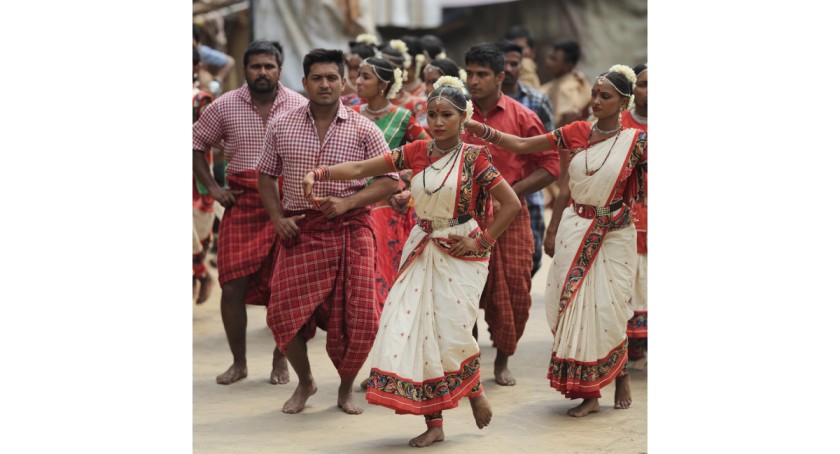A Walk Through Odisha Tribal Fashion and Clothing Styles
Odisha, a state known for its rich cultural legacy and ancient traditions, is home to many tribal communities. These tribes, each with unique customs, rituals, and ways of life, are also renowned for their distinct and beautiful clothing styles. Odisha’s tribal fashion offers a glimpse into these indigenous people’s history, traditions, and artistry, reflecting their deep connection to nature, surroundings, and spiritual beliefs.
This blog explores the fascinating world of Odisha’s tribal fashion and clothing styles, showcasing traditional attire’s vibrancy, diversity, and intricacy.
A Tapestry of Tribal Communities
There are more than 60 tribal communities in Odisha, each with unique traditions, dialects, and ways of life. These tribes include the Kondhs, Saoras, Gonds, Bhuyans, and Santhals. The tribal communities live in the state’s remote hills, forests, and plains, and their clothing styles reflect their environmental surroundings and social identity.
These communities’ patterns, fabrics, and adornments vary widely depending on geography, climate, and cultural significance. Some tribes are known for their intricate weavings, while others are famous for using natural dyes, beads, and embroidery.
The Intricate Craftsmanship Behind Tribal Textiles
One of the most striking aspects of Odisha’s tribal fashion is the use of textiles. Tribal women often weave fabrics using traditional handlooms, incorporating intricate patterns, designs, and motifs passed down through generations. Depending on the tribe’s location and resources, the textiles are typically made from cotton, silk, or wool.
The Kondh tribe, for example, is famous for its handwoven textiles, which are used to create garments such as saris, skirts, and shawls. The Saora tribe showcases a unique form of painting called Saora painting, often incorporating it into textile designs. The Gond tribe creates vibrant, geometric patterns on their clothes that usually represent nature, animals, and sacred symbols.
The Katiya (cotton saris), Dokra (brass work), and Malkha (handwoven textiles) are iconic traditional fabrics in Odisha’s tribal fashion. These fabrics showcase the skill and craftsmanship of tribal artisans and carry deep cultural significance.
Tribal Fashion From Everyday Wear to Ritualistic Elegance
Odisha’s tribal communities dress according to their daily needs and cultural practices. For everyday wear, the women of Odisha’s tribal tribes often wear sari-like draped garments made from cotton or other local textiles. These garments typically feature simple yet beautifully crafted motifs and designs that signify the tribe’s traditions.
Santhal women, for instance, wear brightly colored sarees called Salu, pairing them with blouses and accessorizing with headpieces. Similarly, the Kondh women wear traditional outfits consisting of a simple cotton sari or langa (a long skirt) tied around the waist and adorned with intricate necklaces and earrings made from beads, shells, or metals.
Ceremonial occasions call for more elaborate clothing, often including richly embroidered garments, gold jewelry, and elaborate headgear. During weddings, festivals, and rituals, tribal women dress in more ornate versions of their traditional attire. For special occasions, you can also see tie-dye fabrics, brightly colored cotton, and elaborate beadwork. The women accessorize their clothes with silver jewelry and jewelry made of locally sourced materials.
The Symbolism of Jewelry and Accessories
Tribal dress in Odisha heavily relies on jewelry and accessories for decorative and cultural reasons. Tribal women frequently wear silver jewelry, which is highly valuable artistically and often made using ancient methods.
For example, the Saora tribe is famous for its beautiful silver bangles, necklaces, and earrings that members wear to celebrate important milestones in their lives and to indicate social status. The Gonds adorn themselves with elaborate ear ornaments, bracelets, and nose rings, often crafted from natural elements such as wood, bones, and stones.
Other adornments include headbands, footwear, and scarves made from woven fabrics, providing aesthetic beauty and functional use. These accessories enhance the overall appearance and symbolize tribal identity and community belonging.
Preserving and Adapting Tribal Fashion for the Future
The future of Odisha’s tribal fashion lies in preserving its rich traditions and adapting modern techniques to enhance its sustainability. Many tribal artisans turn to organic dyes and eco-friendly materials to create clothing that honors their heritage while embracing a more sustainable future.
As awareness of Odisha’s tribal fashion grows, there is also a rising interest in supporting these local artisans. By buying handcrafted textiles and jewelry, consumers can support Odisha’s tribal groups in preserving their way of life and transferring their cultural legacy to the next generations.
The Legacy Lives On
Odisha’s tribal fashion is a testament to the state’s rich cultural tapestry and the creativity of its indigenous people. The clothing styles, textiles, and accessories worn by tribal communities speak to their deep connection to the land, spirituality, and traditions. From intricate handwoven fabrics to vibrant jewelry, Odisha’s tribal fashion offers a window into the past and a celebration of timeless beauty. As we continue to admire and support these traditions, we ensure that the stories, skills, and artistry of Odisha’s tribal communities live on for generations to come.


